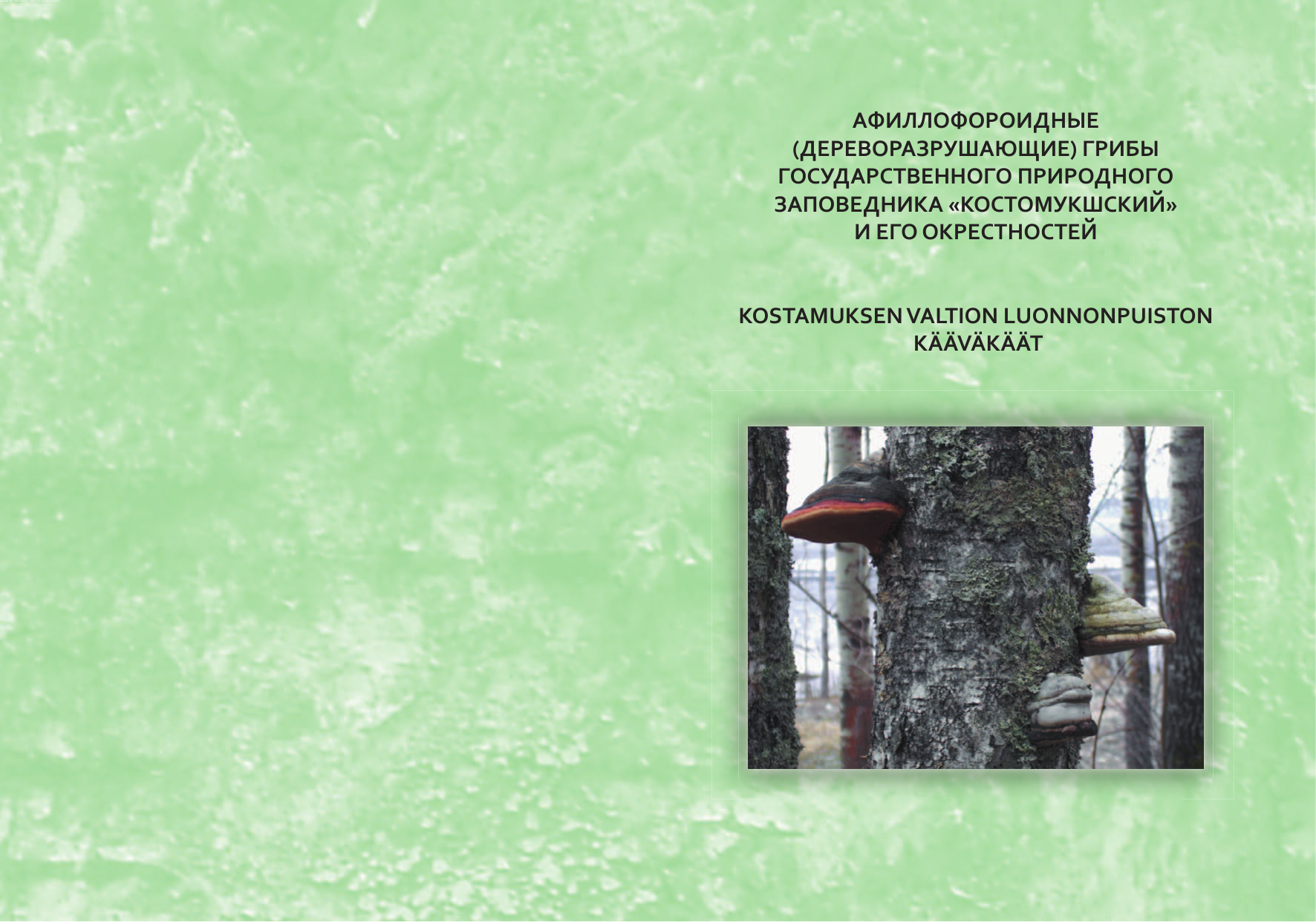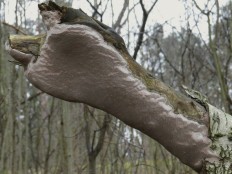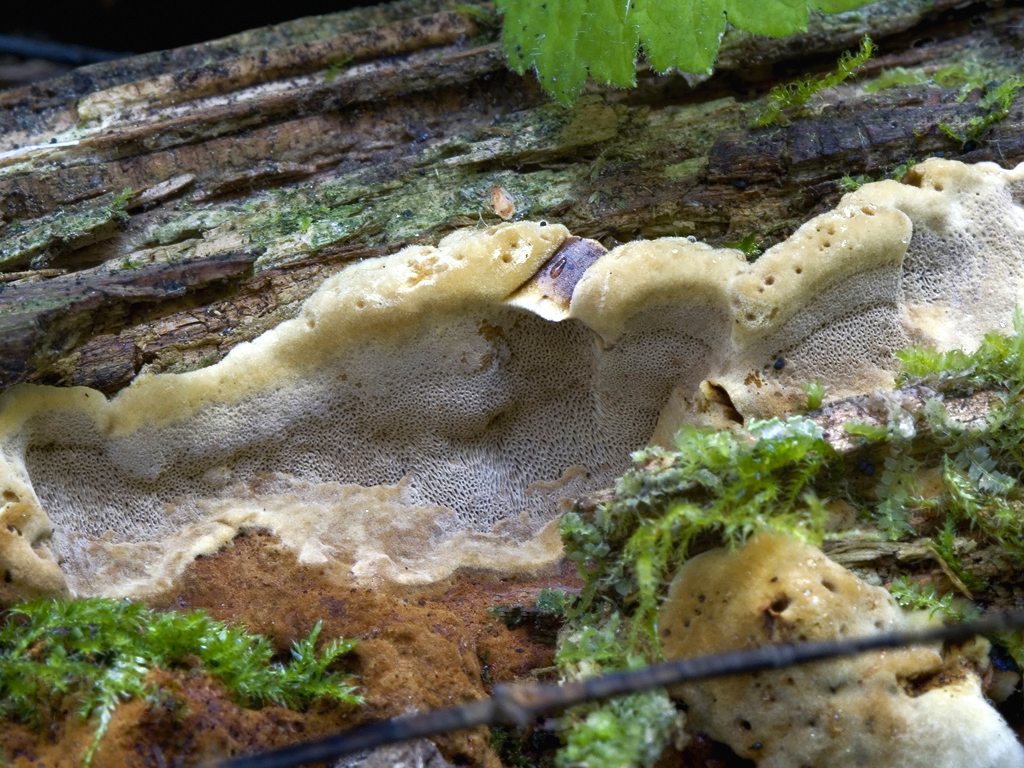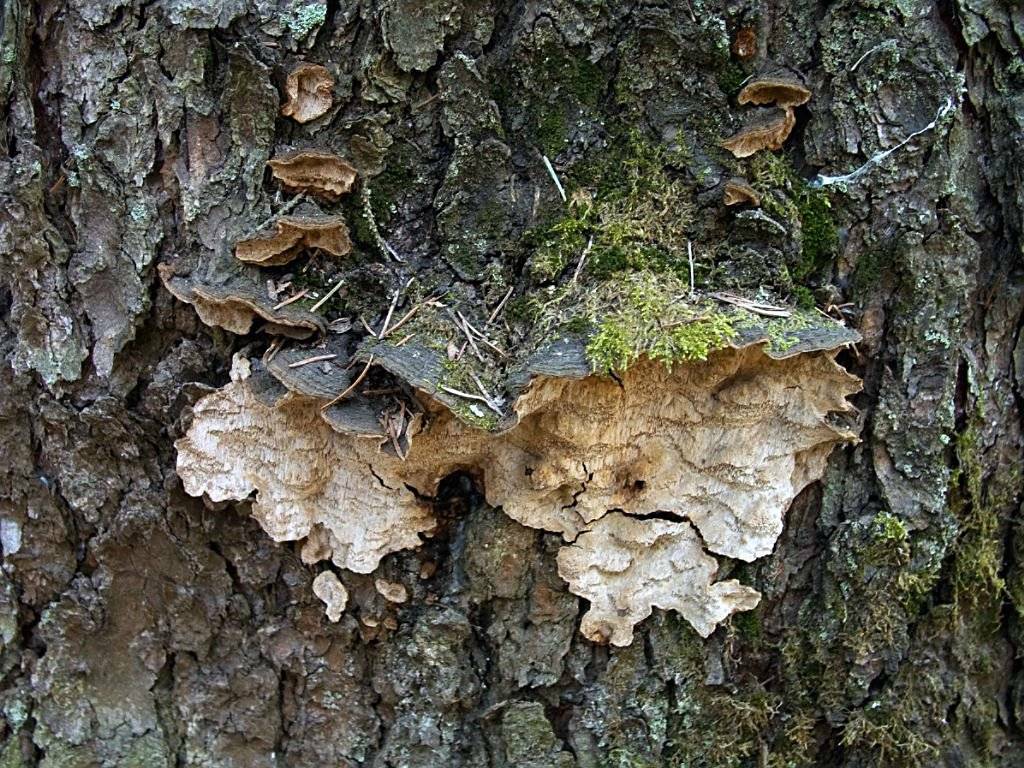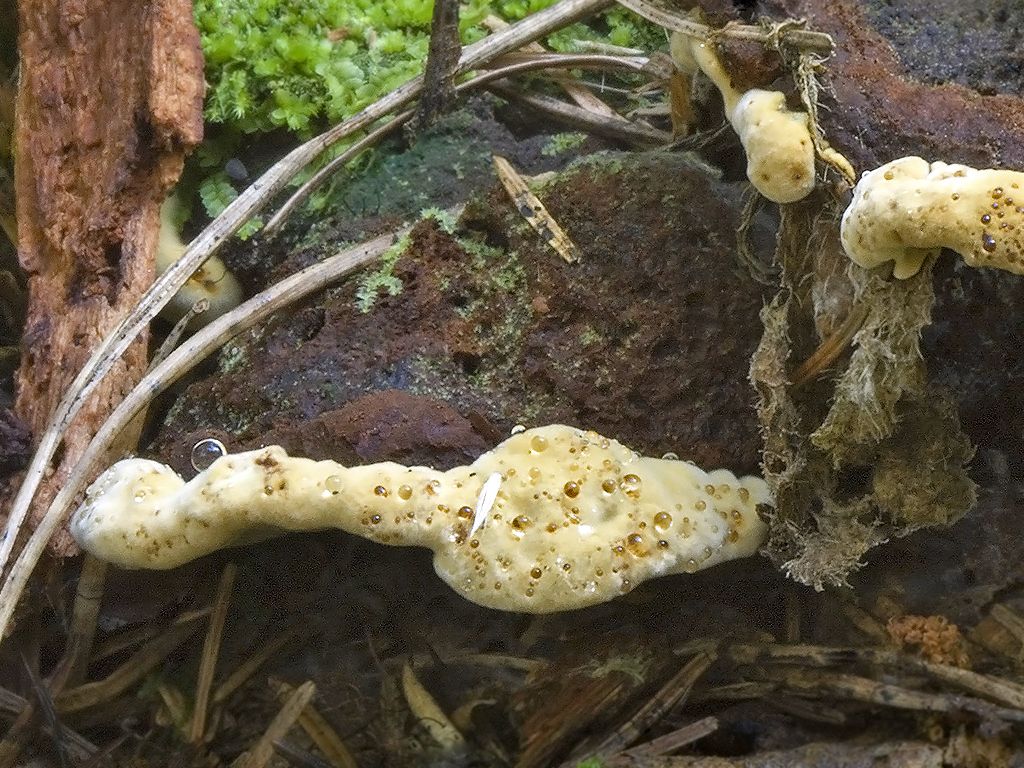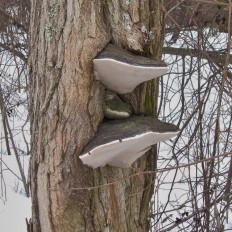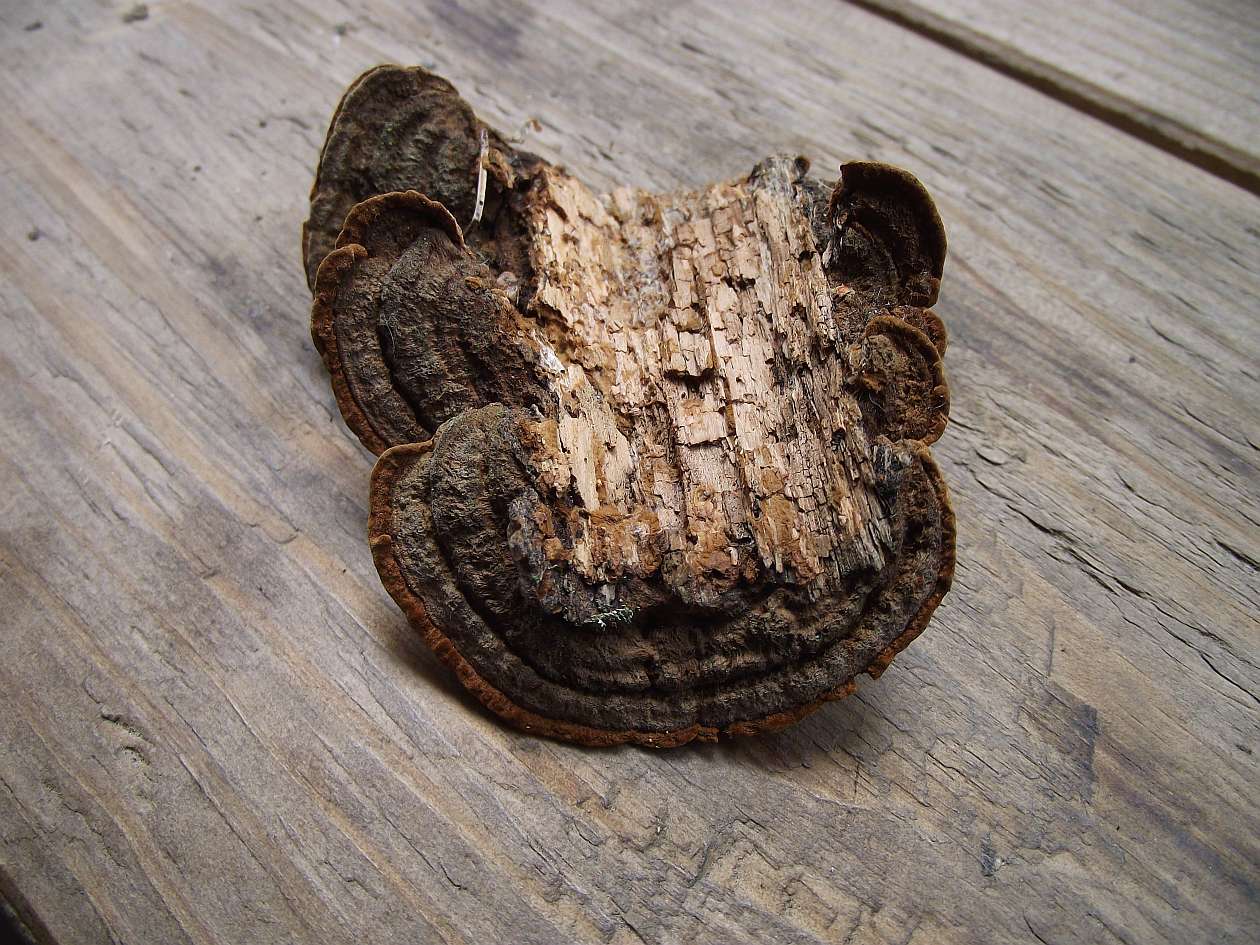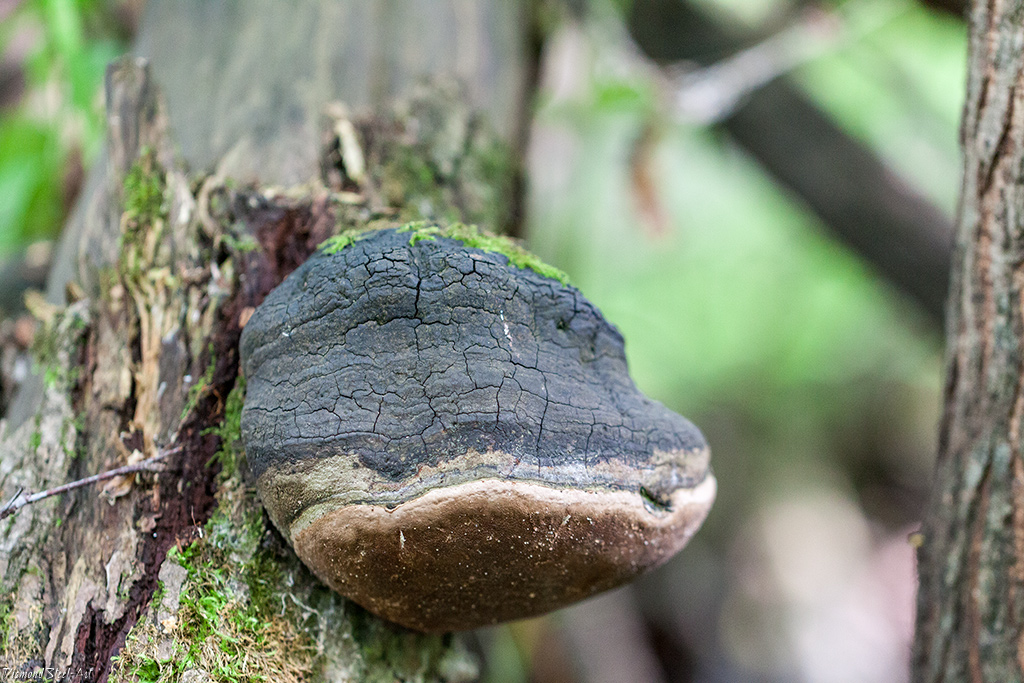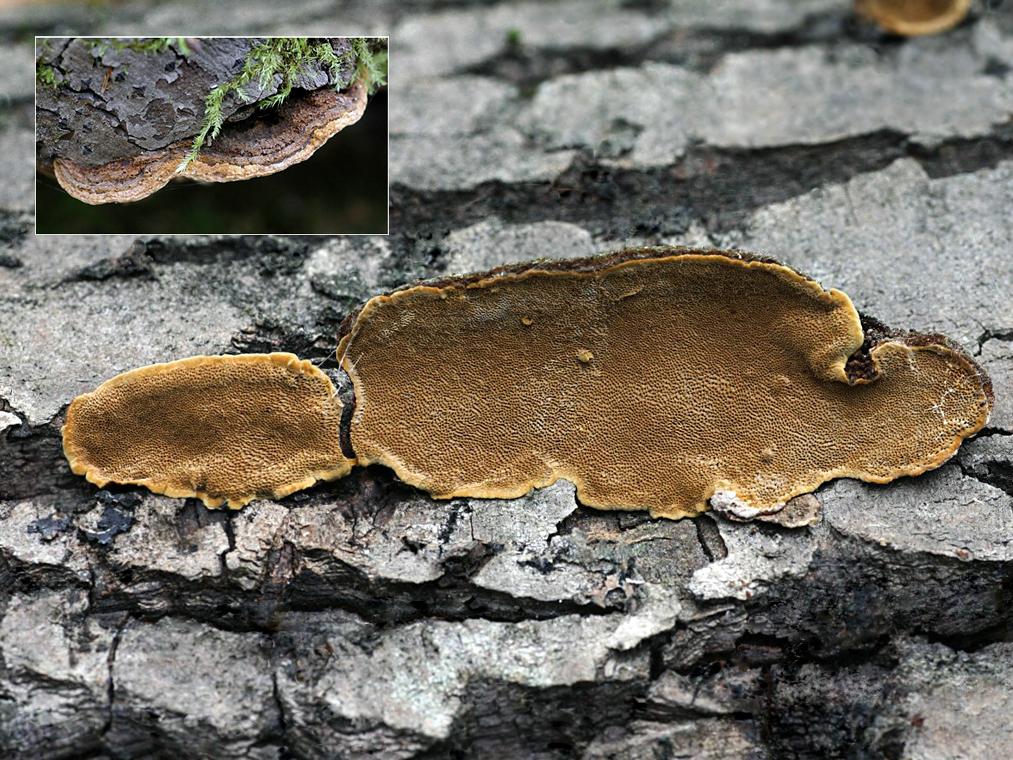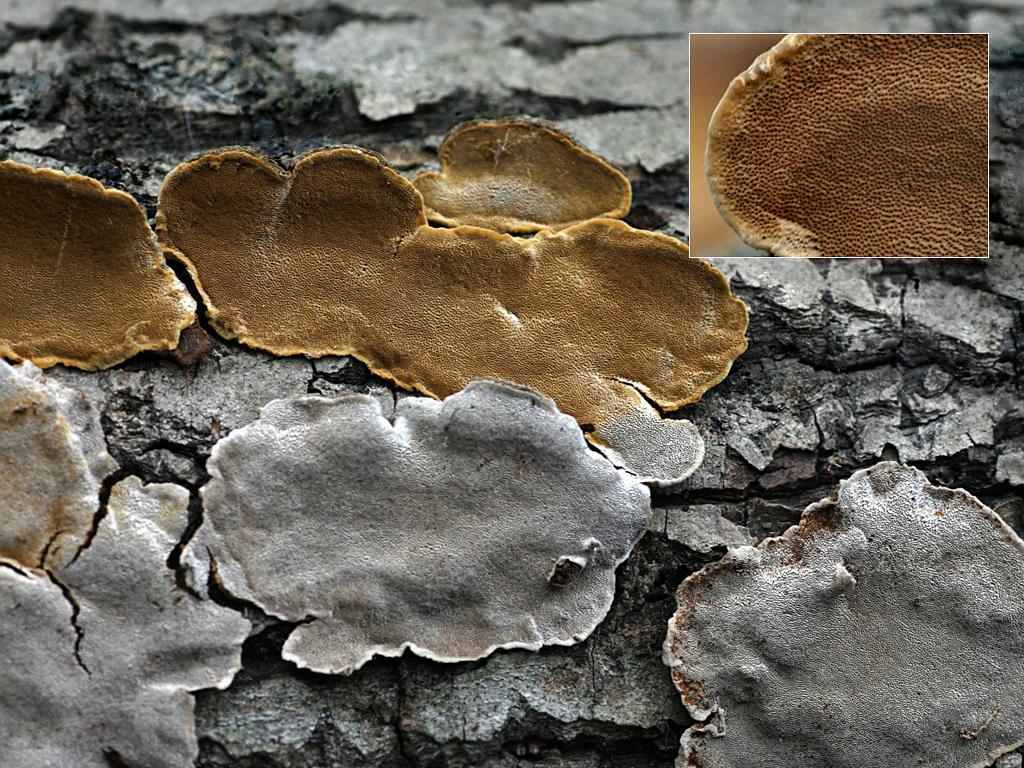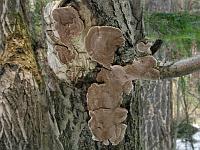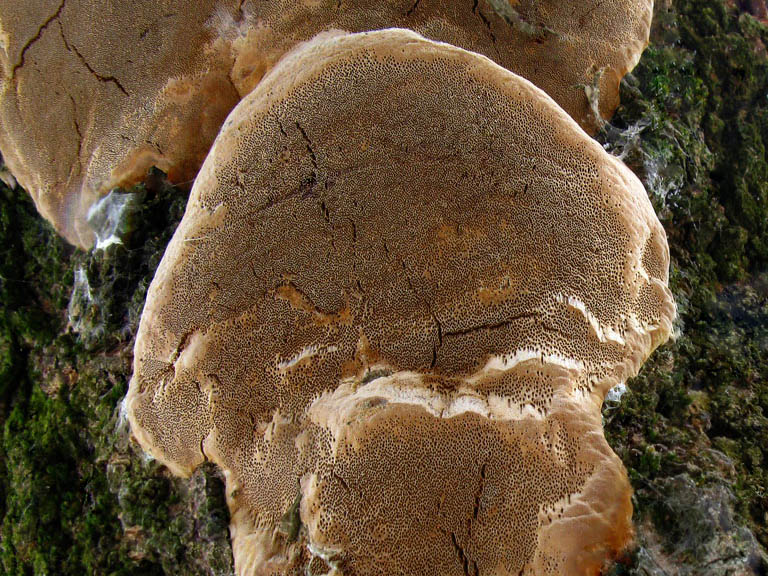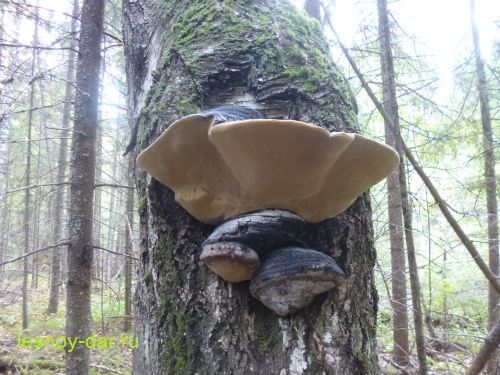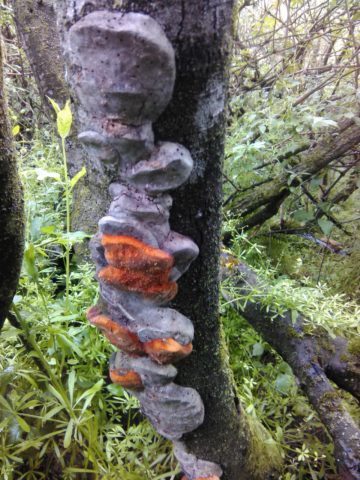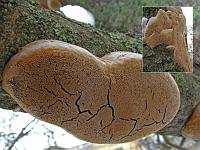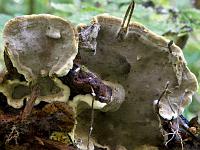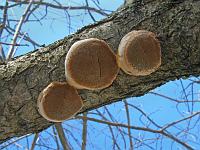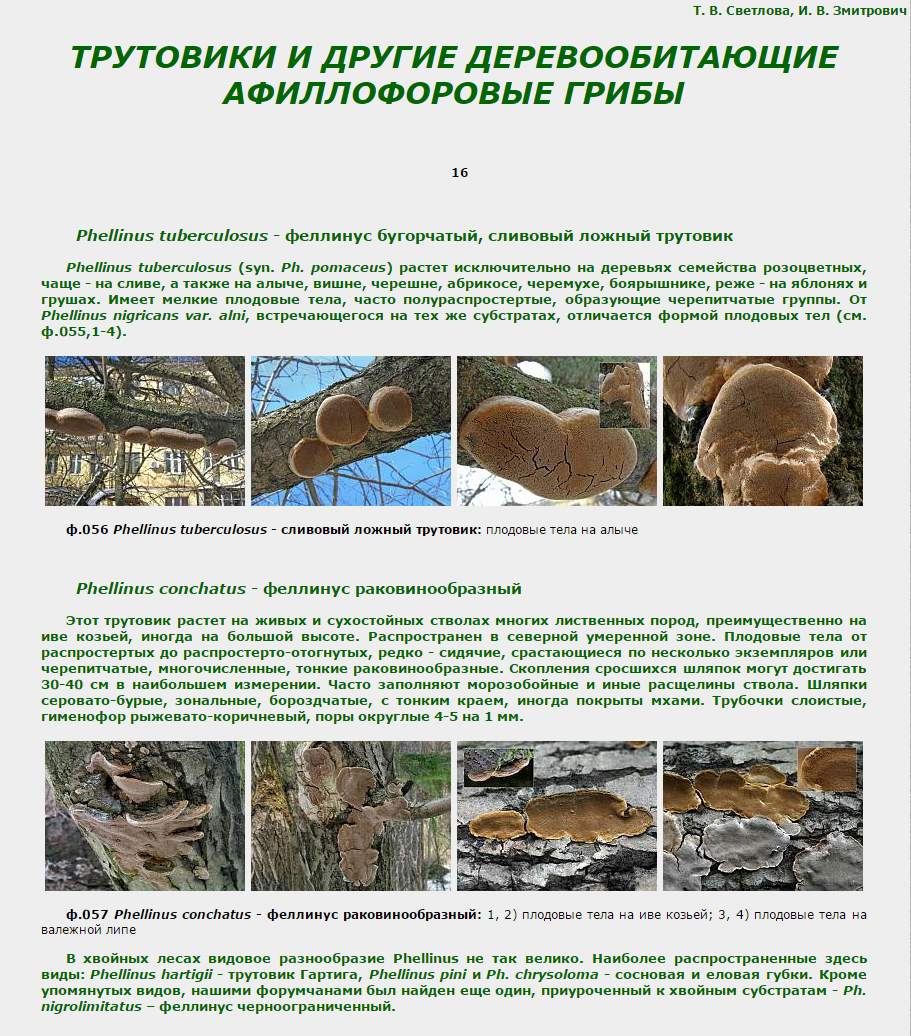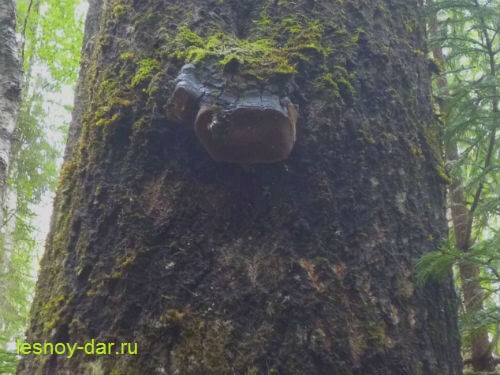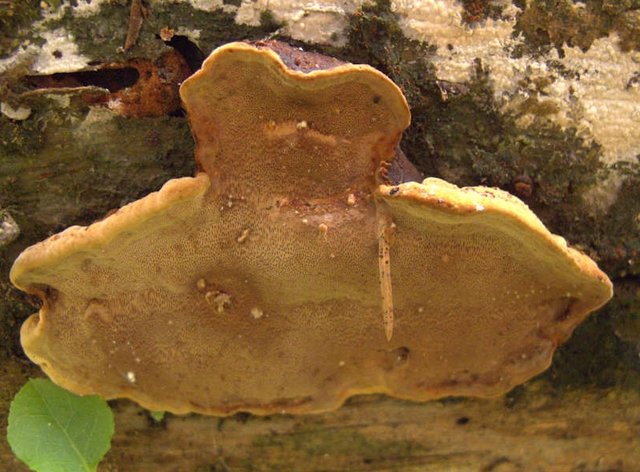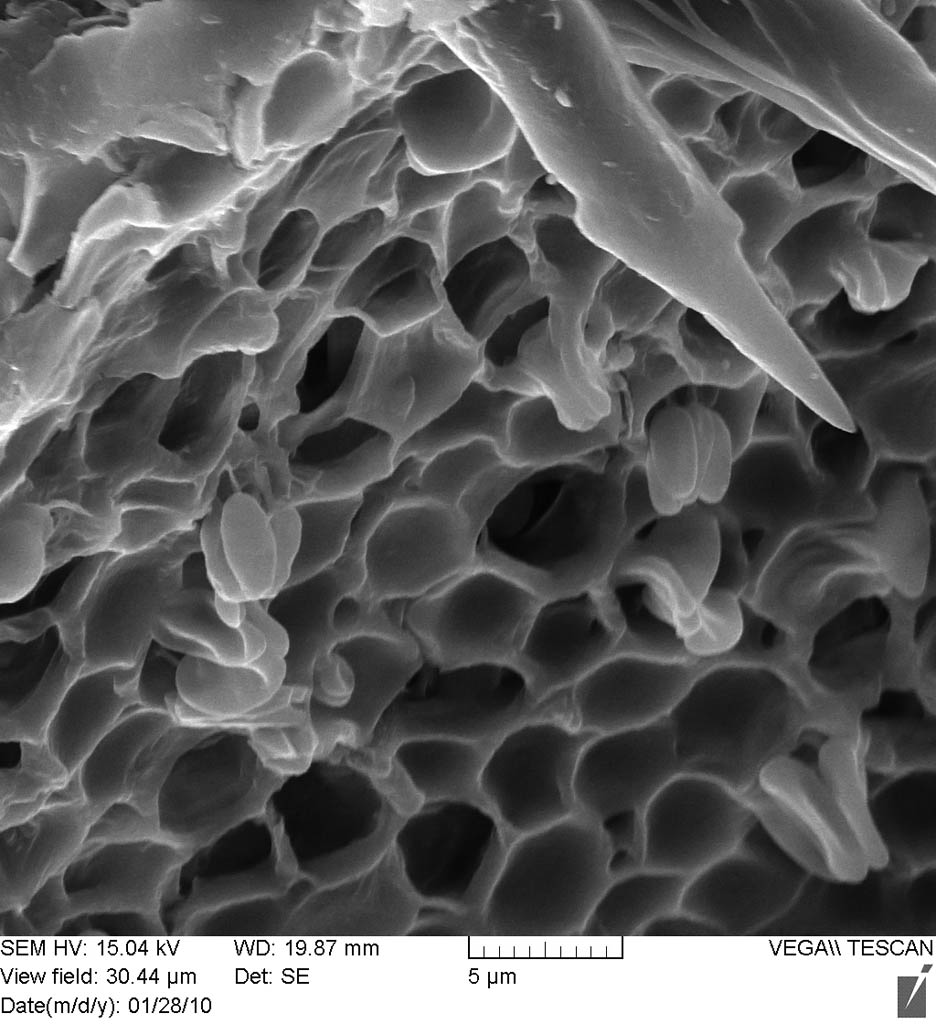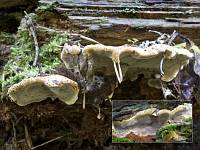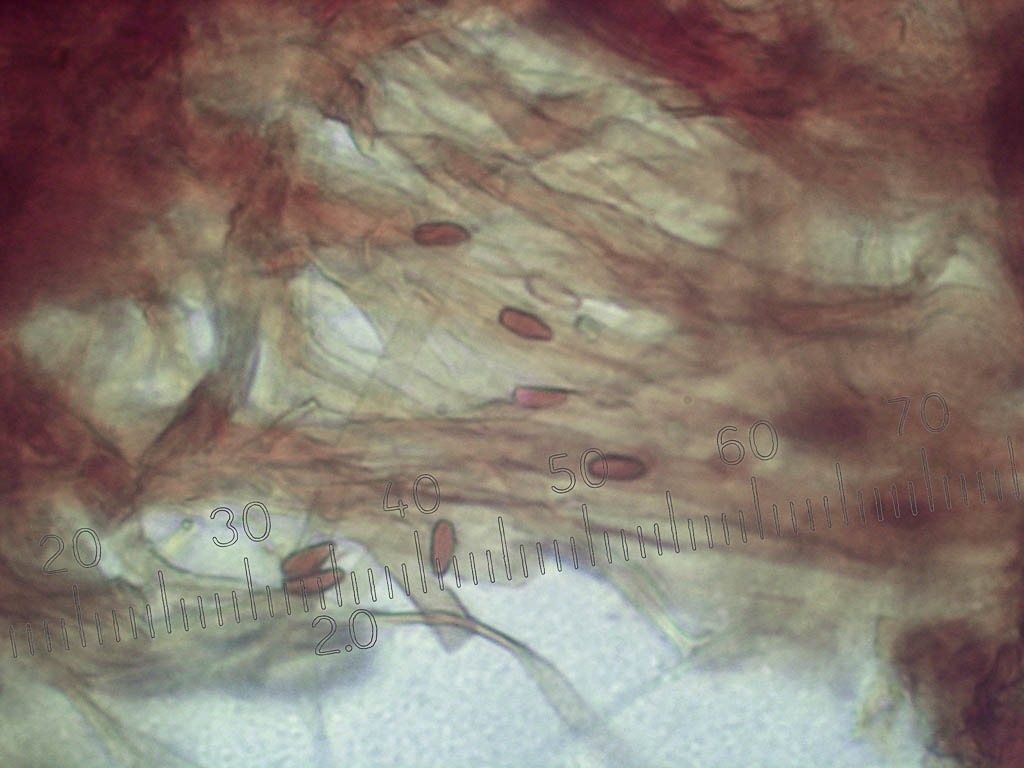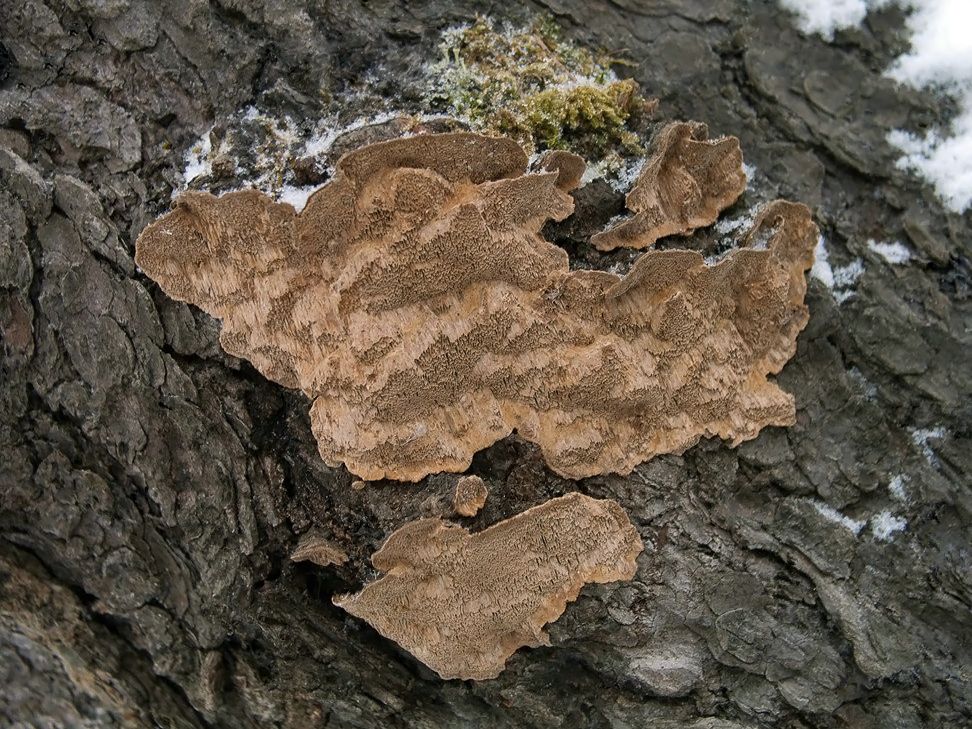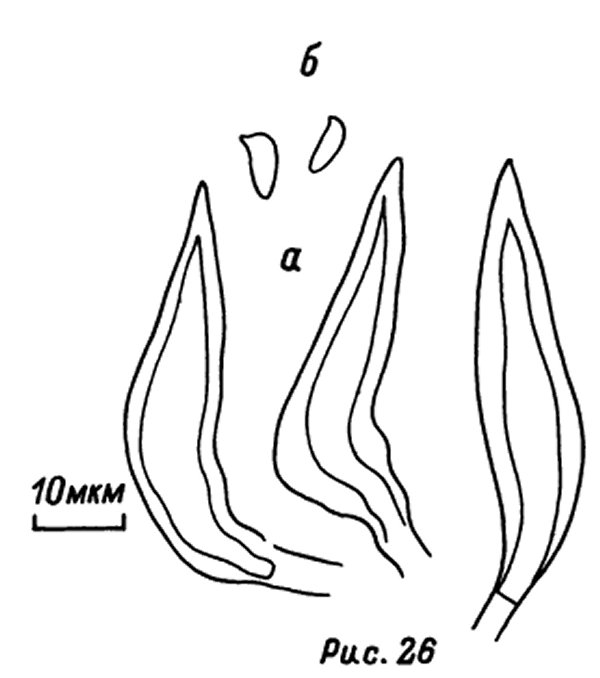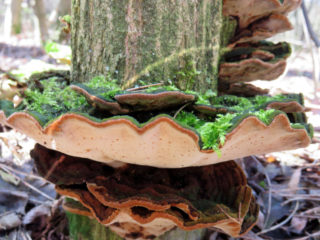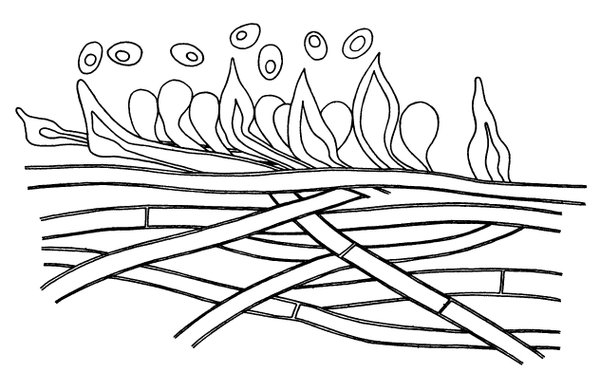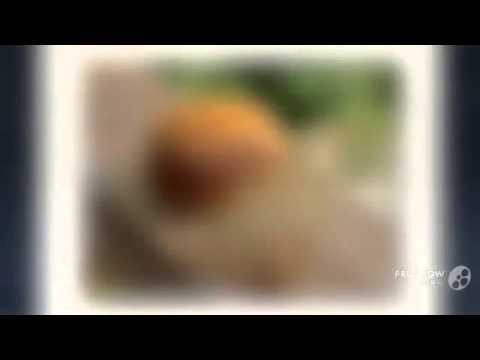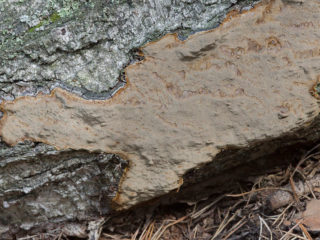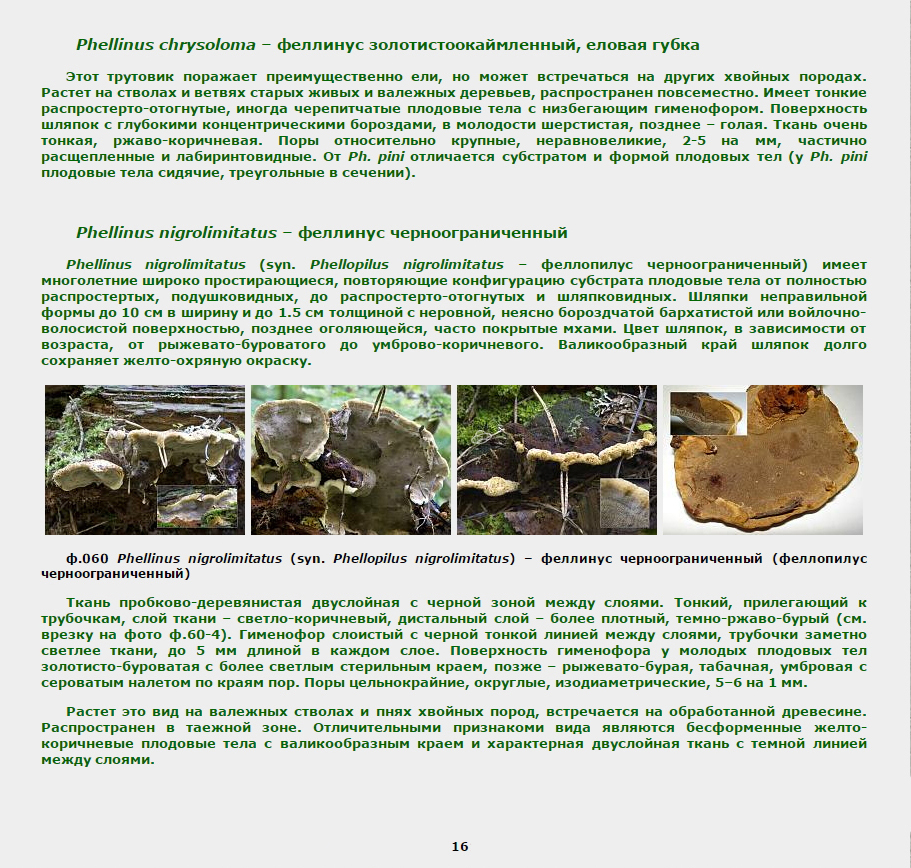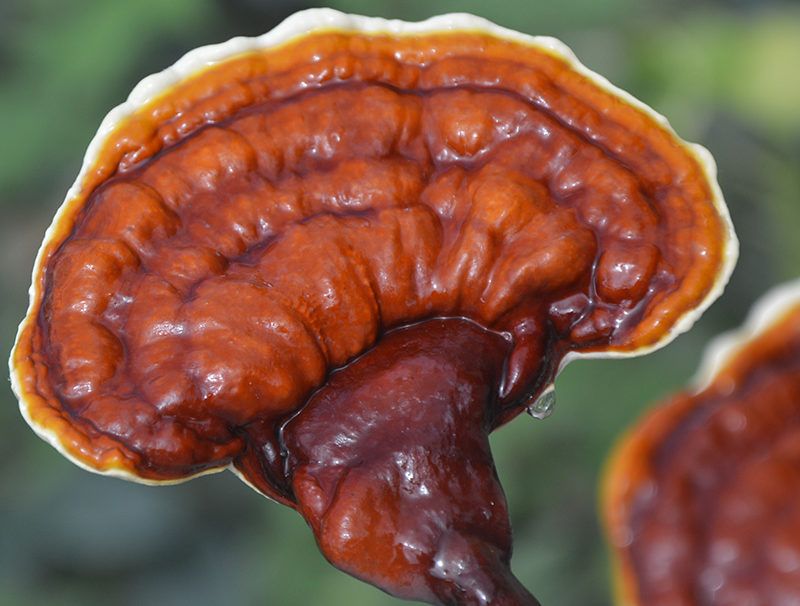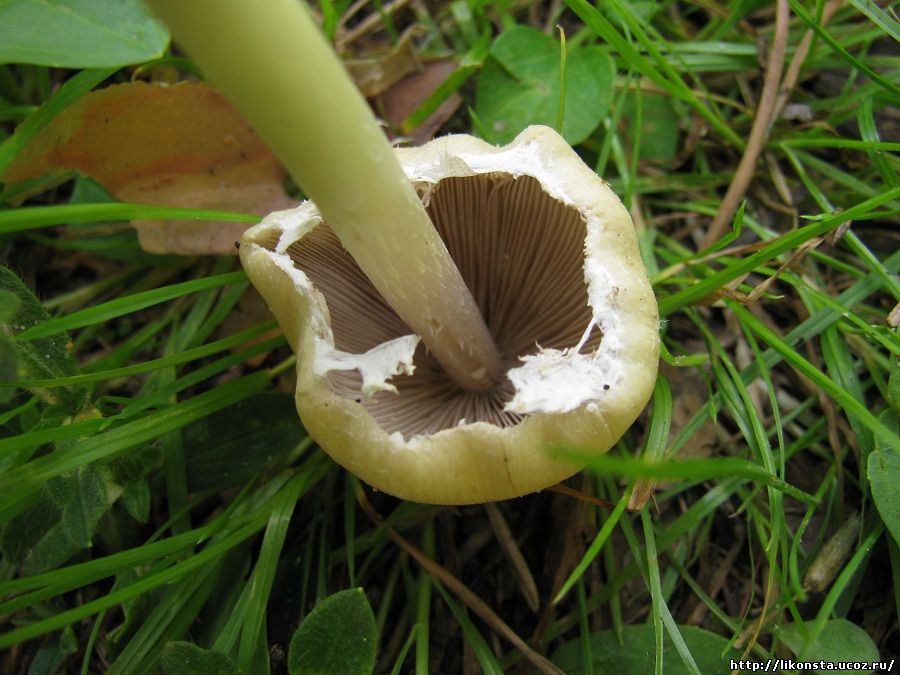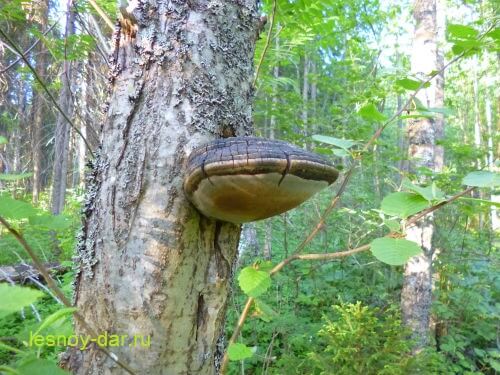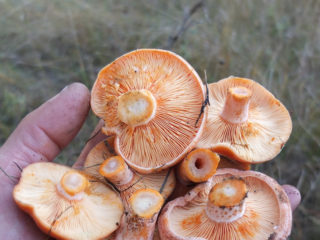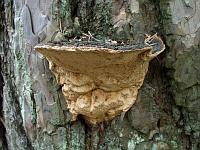Evaluation of the edibility of Phellinus black-bounded
Phellinus shell-shaped is also an inedible tree fungus. The hats are open, often bent back. The hats can be hard to the touch. The groups of hats are arranged in tiles, such formations reach a length of up to 40 centimeters. The color of Phellinus shell-shaped is gray-brown; mature mushrooms have a gray bloom. The pulp resembles a cork, its color is rusty or brown.

This tinder fungus grows in many countries, in our country it is distributed everywhere, but most often it can be found in the northern regions, in the taiga. They are found mainly on coniferous wood, and on dry, and on living trees. These mushrooms bear fruit almost all year round. They often settle in groups, growing together in several specimens.
Tinder Gartig is another inedible relative of Pellinus the Blackbound. Fruit bodies have wide bases that attach them to the wood. The upper surface of the mushroom is rough, with wide stepped zones. The color at a young age is brown-yellow, and then becomes dirty gray or black. Mature polypores crack and become covered with algae. The pulp is very tough, woody, yellow-rusty in color.

Often, the fruit bodies of Gartig tinder fungi grow together. They settle at the bottom of the trunks, on the north side. These are perennial mushrooms. They grow in coniferous forests, most often found on fir trees. These woody fungi cause pale yellow rot on trees. Tinder Gartig is a dangerous pest of fir.
Description of Phellinus black-limited
The fruit bodies of Phellinus black-limited have an irregular shape. The configuration of the fruiting bodies can be varied. The color of the caps is yellow-brown, while the edges are more light.

These fungi completely repeat the configuration of the substrate, growing tightly to it. The fruiting bodies can be fully extended or bent back. The shape of the fruit body is sessile, and the bent part looks like a narrow cap. The width of this cap is 8-10 centimeters.
The surface of young black-bounded fellinuses is very soft and velvety, tomentose, and the color is reddish-brown. Later, the surface of the mushroom is slightly bare and becomes furrowed, at this moment the color changes to brown or chocolate. The edges of the caps remain yellow-ocher for a long time. Sometimes the surface of black-bordered fellinuses is covered with moss.
A characteristic feature of black-bordered Pellinus is a two-layer fabric, with a dark line between the layers. Another distinctive feature of this fungus is its very small pores.

Growing places of Phellinus black-limited
Fellinus black-confined grows exclusively on dead conifers such as spruce, pine, fir and larch.
Reishi Mushroom (Ganoderma lucidum)
Synonyms:
Lacquered polypore, or lacquered Ganoderma (lat.Ganoderma lucidum) is a mushroom of the genus Ganoderma (lat.Ganoderma) of the Ganoderma family (lat.Ganodermataceae).
Lacquered polypores are found in almost all countries of the world at the base of weakened and dying trees, as well as on dead deciduous wood, very rarely on coniferous wood. Occasionally, varnished tinder fungus is found on living trees, but more often fruiting bodies are found on stumps, not far from the soil surface. Sometimes basidiomas grown on tree roots buried in the ground can be found directly on the soil. From July to late autumn.
The cap is 3-8x10-25x2-3 cm, reniform or almost ovoid, flat, very dense and woody. The skin is smooth, shiny, uneven, wavy, divided into many concentric growth rings of different shades.The color of the cap varies from reddish to brown-violet, or (sometimes) black with a yellowish tinge and clearly visible growth rings.
The leg is 5-25 cm in height, 1-3 cm in ∅, lateral, long, cylindrical, uneven and very dense. The pores are small and rounded, 4-5 per 1 mm². The tubules are short, ocher. The spore powder is brown.
The pulp is ocher-colored, very tough, odorless and tasteless. The pulp is spongy at first, then woody. The pores are whitish at first, turn yellow and brown with age.
The mushroom is inedible, it is used exclusively for medical purposes.
Spreading
Lacquered polypore - saprophyte, wood destroyer (causes white rot). It is found in almost all countries of the world at the base of weakened and dying trees, as well as on dead deciduous wood, very rarely on coniferous wood. Occasionally, varnished tinder fungus is found on living trees, but more often fruiting bodies are found on stumps, not far from the soil surface. Sometimes fruiting bodies grown on tree roots buried in the ground can be found directly on the soil. During growth, the mushroom can pick up twigs, leaves and other debris into the cap. In Russia, varnished tinder fungus is widespread mainly in the southern regions, in the Stavropol and Krasnodar territories, in the North Caucasus. In temperate latitudes, it is less common than in the subtropics.
Recently, it has spread widely in Altai, in places of predatory felling.
Season: July to late autumn.
Cultivation
The cultivation of Ganoderma lucidum is carried out exclusively for medical purposes. Fruit bodies traditionally serve as raw materials for obtaining biologically active substances, much less often the vegetative mycelium of this fungus. Fruit bodies are obtained using extensive and intensive technologies. The vegetative mycelium of Ganoderma lucidum is obtained by submerged culture.
The Reishi mushroom is highly prized and cultivated in the countries of Southeast Asia.
Application The mushroom Ganoderma lucidum is one of the famous basidiomycetes used for medicinal purposes for more than two thousand years by the peoples of Southeast Asia. Linzhi is mentioned in many ancient Chinese medical books: "Herbalist Shen Nun" (Shen Nun Ben Cao Qin) "Compendium of Medicinal Substances" and others. The monograph (Ben Cao Gan Mu) describes Linzhi as the "top" medicine, which means - the most precious , a heaven-given remedy for disease. The books also described in detail the characteristics, methods of application and therapeutic actions of Linchzhi: “... the smell is not pungent, the taste is slightly bitter, intended to eliminate overflow in the chest, increase the qi (energy) of the heart, nourish the middle part of the body, strengthen memory. Medicines based on Linzhi dilate the coronary artery of the heart, enrich the blood with oxygen, eliminate coronary heart disease (CHD), prevent myocardial infarction, and normalize cardiac activity. It was used for various diseases, including bronchial asthma, neurasthenia, gastritis, and liver diseases.
Intensive studies of Ganoderma lucidum over the past decades have shown that biologically active substances isolated from this fungus have immunomodulatory, antitumor, antiviral, antibiotic, hypolipidemic, hypoglycemic, hepatoprotective, gene-protective, anti-inflammatory, anti-allergenic, cardiac, antioxidant- , respiratory and nervous systems.
Fellinus rusty-brown: where it grows, what it looks like, can it be eaten, description and photo
T. V. Svetlova, I. V. Zmitrovich
Fruit bodies are annual or hibernating, hard or corky leathery when fresh, hard, woody when dry. At the beginning of development, they look like small pubescent tubercles, which gradually grow, merge and form fruit bodies widespread along the substrate, often with low or stepped false caps. The litter is thin, densely corky, reddish-brown or rusty-brown, blackening under the action of KOH.The edge is sterile, tomentose-clumpy, ridge-shaped, lighter than the tubular part. The surface of the hymenophore has a silky sheen, reddish brown, reddish, chestnut or chocolate brown, sometimes with a pinkish or lilac tint. The tubules are single-layered or indistinct, straight or oblique, sometimes open, up to 10 mm long. The pores are small, 7-9 by 1 mm, rounded or rounded-angular, entire.
It grows on valezh of conifers, more often on spruce, in old-growth, little-exploited forests. Causes white rot. Widespread, but rare.
f.289 Fuscoporia ferruginosa (syn. Phellinus ferruginosus) - Rusty phuscoporia: fruiting bodies on a birch tree
Distributed in Eurasia and North America, in Russia - from the European part to the Far East. It occurs mainly in the zone of deciduous forests on stumps, dead trunks and dead branches of many deciduous trees and shrubs, occasionally grows on dead coniferous wood. Causes inactive white rot.
f. 290 Fuscoporia ferruginosa (syn. Phellinus ferruginosus) - Rusty Fuscoporia
It differs from similar in appearance Fellinidium rusty-brown (Phellinidium ferrugineofuscum) and Fellinidium Pouzar (Phellinidium pouzarii, syn. Phellinus pouzarii) by its confinement to deciduous substrates.
Fomitiporia punctata (syn.Phellinus punctatus) - Fomitiporia punctate
Polypore with annual or perennial, rigid, outstretched fruiting bodies, thin or slightly thickened in the center, usually elongated along the substrate, with an even or wavy porous hymenophore. The sterile edge is narrow, thin, adjacent to the substrate, disappears with age. The litter is reddish or yellowish brown, very thin, woody. The color of the pore surface, depending on the season and weather conditions, varies from yellow-rusty-brown to grayish-brownish, umber. In perennial specimens, the hymenophores are layered, the layers are clear, the new layer often does not completely cover the previous one, and cracks often appear on older specimens. The pores are small, 6-8 per 1 mm, whole-edged, from rounded-angular to diamond-shaped, the pore surface is iridescent when viewed from different angles, with a grayish bloom.
f.291 Fomitiporia punctata (syn. Phellinus punctatus) - Fomitiporia punctata
It grows on dying trees and dead deciduous wood, occasionally on conifers. Causes actively developing white rot. It is found on all continents, in Russia it is common throughout the forest zone.
The characteristic features of the species are open fruiting bodies with small, slightly diamond-shaped pores. A closely related species, morphologically identical to Fomitiporia punctata, but differing in microscopic structure, was described in 1982 under the name Phellinus pseudopunctatus. Black-bordered phellinus (Phellinus nigrolimitatus), in contrast to Fomitiporia punctata, often forms open-backed fruiting bodies, lives on coniferous substrates and has a thin dark layer in the tissue.
Merchandising and customs examination of goods of animal and plant origin textbook. allowance
RIO of the Vladivostok branch of the Russian Customs Academy
The concept, signs and classification of goods of animal and plant origin are given. The characteristics of certain types of specific goods of animal and plant origin are given. The features of customs examination of objects of fauna and
flora as goods of animal and plant origin, transported across the customs border of the Customs Union, and its components - identification and cost expertise. Methods for assessing certain categories of fauna and flora objects are presented.
(oak fellinus). Pleurotus djamor (Rumph ex Fr.) Boedijn (salmon-straw oyster mushroom).
Preview: Commodity Science and Customs Expertise of Goods of Animal and Vegetable Origin Study Guide.pdf (0.6 Mb)
No. 1 [Systematic notes on the materials of the Herbarium. P.N. Krylov, Tomsk State University, 2013]
The scientific journal "Systematic Notes on the Materials of the Herbarium of Tomsk University" was founded in 1927 by Porfiry Nikitich Krylov, as a periodical in addition to "Proceedings of the Tomsk Branch of the Russian Botanical Society." Since that time, the name of the journal has been transformed by only a few and today it contains the name of the founder - P.N. Krylov.
The journal publishes articles on the following sections of botany:
descriptions of new taxa,
systematic reviews,
floristic finds,
characters used in the taxonomy of specific taxa,
typification of taxa names.
... - Fellinus 1. Ph. chrysoloma (Fr.) Donk - F. gold-bordered, sponge sponge. 2.
Preview: Systematic notes on the materials of the Herbarium. P.N. Krylov, Tomsk State University №1 2013.pdf (0,5 Mb)
Latin-Russian Dictionary for Biologists
M .: FLINT
The dictionary is intended to help in "decoding" both Latin names
living organisms and biological terms, includes about 3 thousand
arranged in a single alphabetical order of Latin and Greek words,
on the basis of which scientific biological Latin is built. To simplify
the perception of the material in front of the actual text of the dictionary is given the original
the author's method of meaningfully memorizing Latin and Greek words,
based on their similarity to the derivative Russian words.
Phellinus nigrolimitatus - black-bounded fellinus (fungus of the family tinder) limne (gr.) - lake, pond,
Preview: Latin-Russian Dictionary for Biologists.pdf (0.2 Mb)
No. 3 [Forest Bulletin. Forestry Bulletin, 2008]
Previous name: Bulletin of the Moscow State University of Forestry - Lesnoy Vestnik (until 2016) / The journal is the leading scientific and information journal in the field of forestry, ecology, logging, woodworking, chemical technology and wood processing, forestry economics.
The journal publishes: articles by scientists of higher education, research institutes, foreign specialists, heads of enterprises and engineers; texts of reports of scientists at symposia, conferences and meetings; annotations and reviews of new books; journalistic and historical literary materials. Editor-in-Chief - Alexander Nikolaevich Oblivin, Professor, Doctor of Technical Sciences, Academician of the Russian Academy of Natural Sciences and Moscow Academy of Natural Sciences, Honored Worker of Science and Technology of the Russian Federation, President of Moscow State University of Law, Professor of the Department of Processes and Apparatuses of Woodworking Industries of the Moscow State Forestry University
On the trunks and trunks of living willows and mountain ash trees, Pellinus punctus (P. punctatus) often develops, causing igniarius) + + Blackish tinder fungus (Phellinus nigricans) + Pine sponge (Phellinus pini) + Fellinus
Preview: Bulletin of the Moscow State University of Forestry - Forest Bulletin No. 3 2008.pdf (0.6 Mb)
Natural complex of Vottovaara mountain: features, current state, conservation [monograph]
Karelian Scientific Center of the Russian Academy of Sciences
The monograph gives a multifaceted description and assessment of the natural complex of Vottovaara, located in the extreme southeast of the Muezersky region of the Republic of Karelia. The results of a survey of the territory by five institutes of the KarRC RAS are presented. A brief description and assessment of the general physical and geographical features of the territory (geological and geomorphological, hydrological and soil) are given. In the following, terrestrial ecosystems (swamps and wetlands, forests and landscapes in general) are described and assessed. In the next part, vascular plants, mosses, fungi, mammals, birds, insects are characterized and evaluated (with lists of species). A special place in the monograph is occupied by materials of archaeological research. In the conclusion, general conclusions are drawn and the expediency of giving the territory under consideration the status of a landscape natural monument of regional significance is substantiated.
Phellinus shell-shaped I Phellinus ferrugineofuscus (P. Karst.) Bourdot et Galzin Phellinus rusty-brown E Phellinus laevigatus (P.Karst.) Bourdot et Galzin Fellinus smoothed B Phellinus lundellii Fiasson et Niemelä False tinder fungus Lundell False blackish tinder fungus B Phellinus nigrolimitatus (Romell) Bourdot et Galzin Lellinus black confined Donk Colristus Colrisiae - perennial.
Preview: Natural complex of Vottovaara mountain features, state of the art, conservation.pdf (0.4 Mb)
Tinder Gartig (Phellinus hartigii)
Fruit body:
the fruiting bodies of the fungus are usually formed in the lower part of the trunk from the northern side. Single fruiting bodies are perennial. Sometimes fruiting bodies grow together in several specimens. First, the fruiting bodies are nodular, then cantilever. Attached by a wide base. Quite large, about 28 centimeters wide, up to 20 centimeters thick. The upper surface is rough, with wide, staggered zones, at first it has a yellow-brown color, then changes color to a dirty grayish or blackish. As the mushroom matures, the surface cracks and becomes covered with green algae. The edges of the fruiting body are rounded, obtuse, ocher-brown or light reddish.
Hymenophore:
rusty brown or yellowish brown. The pores are angular or rounded. The tubes are arranged in several layers, each tubular layer is separated by a sterile layer.
Pulp:
woody, very hard, zoned. On the fractures, flesh with a silky sheen. Yellowish rusty or yellowish brown.
Spreading:
Tinder fungus Gartig is found in coniferous forests. Grows on conifers, usually on fir.
Similarity:
this species closely resembles the Phellinus robustus growing on the oak. The difference is the substrate and the layers of sterile tissue between the layers of the tubes.
Household purpose:
Gartig's polypore causes a pale yellow rot that is limited by narrow black lines from healthy wood. This mushroom is a dangerous pest of fir. Trees are infected through broken branches and other injuries. In the early stages of decay, the affected wood becomes fibrous, soft. Brown mycelium of the fungus accumulates under the bark, rotten branches appear. Then, depressed places are formed on the surface of the trunks, in which the fungus forms fruiting bodies.
Notes:
trees affected by tinder fungus are scattered in fir plantations singly. In the foci of infection, the infection with tinder fungus can reach 40% or more. Especially in old fir stands. The thickest trees in the stand are mainly affected. The development of rot in the trunk of such trees is accompanied by the formation of tinder bodies on the trunks. As a result, the resistance of the trees decreases, the clutter and the formation of foci of stem pests increase.
Mushrooms. Class Basidiomycetes
The textbook provides a botanical and ecological description of fungi of different classes of orders, families and genera, a wide disclosure of the macro- or microscopic structure of the thallus (mycelium) of different species and a vivid illustration.
The tutorial includes 5 books.
Book 3 “Mushrooms. Class Basidiomycetes ”presents the taxonomy of heterotrophic organisms - fungi. The characteristics of the class are given with a detailed description of orders, families and genera, wide disclosure of the macro- or microscopic structure of the thallus (mycelium) of different species. Vividly illustrated.
The manual is recommended for use by teachers in laboratory classes and in preparation for lectures, for students to prepare answers to exam questions, independent work in the form of reports, messages, essays, graduate students, and also interesting for a wide range of readers.
.
Fungi of the genus Phellinus secrete a lot of peroxidase, especially the false tinder fungus (Phellinus igniarius in our forests, the flat tinder fungus (Ganoderma applanatum), as well as many fungi of the genera Inonotus and fellinus Mushrooms of the genus Phellinus are often pathogens on wood and for living trees Rusty-brown Phellinus (Phellinus ferrugineofuscus) is found on dead trunks and branches of conifers Black-striped Phellinus (Phellinus nigrolimitatus) lives on thick dead trunks and stumps of conifers
Preview: Mushrooms. Class Basidiomycetes .pdf (1,3 Mb)
No. 5 [Pharmacy, 2013]
Scientific and practical journal for pharmacists, pharmacists, pharmaceutical manufacturers. Published since 1952.
Editor-in-chief of the journal: - Professor I. A. Samylina.
By the decision of the Plenum of the Higher Attestation Commission "Pharmacy" was included in the list of journals in which the publication of the results of dissertation research for the degree of Doctor of Science is recommended.
Journal subject: medicine production technology; new methods of drug research; falsification of drugs; clinical pharmacology; pharmaceutical market news; pharmacopoeial monographs; consultations for pharmacy workers; personnel training.
Frequency of issue - 8 magazines per year
Target audience: manufacturers of pharmaceuticals, distributors, pharmacists, pharmacists, health care workers, libraries.
Research on co-cultivation of oblique tinder fungus and Phellinus punctatus - basidial
Preview: Pharmacy # 5 2013.pdf (0.6 Mb)


